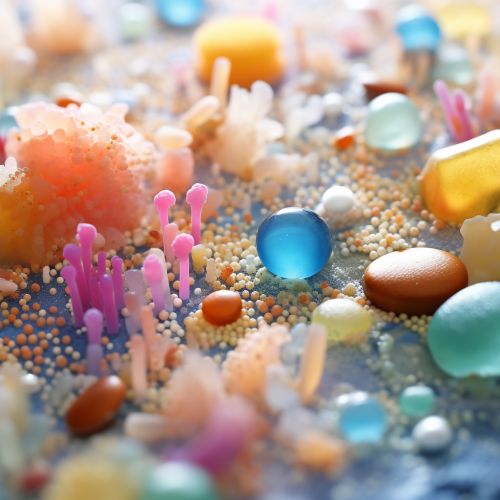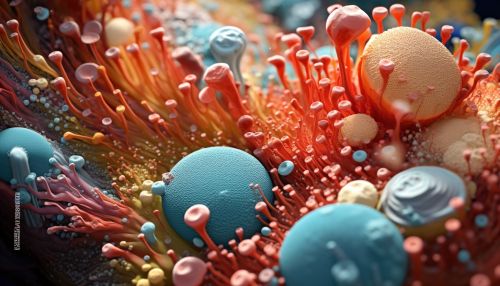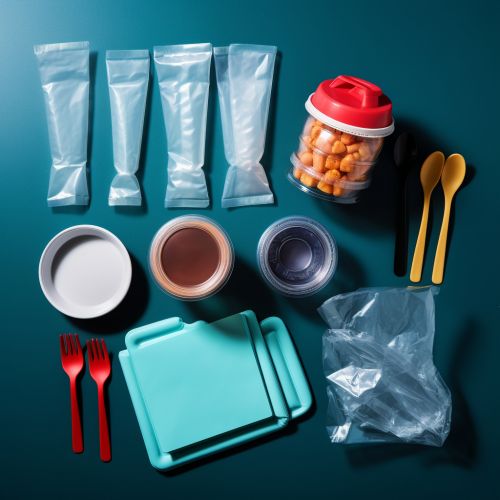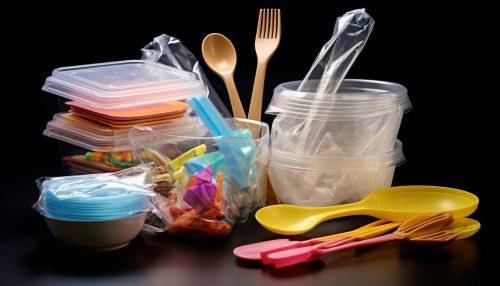The Role of Microbes in Plastic Degradation and Recycling
Introduction
Microbes, or microorganisms, play a crucial role in the degradation and recycling of plastics. These tiny organisms, which include bacteria, fungi, and algae, have the ability to break down various types of plastic materials, converting them into simpler compounds that can be reused or safely returned to the environment. This article explores the role of microbes in plastic degradation and recycling, delving into the mechanisms they use, the types of plastics they can degrade, and the potential applications of this microbial activity in waste management and environmental conservation.


Microbial Degradation of Plastics
Microbial degradation of plastics is a complex process that involves the breakdown of polymeric materials into smaller, simpler compounds. This process is facilitated by various types of microorganisms, including bacteria, fungi, and algae, which produce enzymes capable of degrading plastic materials. These enzymes, known as plastic-degrading enzymes, act on the polymer chains in plastics, breaking them down into monomers or other simple compounds.
There are several types of plastic-degrading microbes, each with its unique set of enzymes and degradation mechanisms. For instance, some bacteria, such as Pseudomonas spp. and Bacillus spp., are known to degrade polyethylene, one of the most common types of plastic. These bacteria produce enzymes that oxidize the polyethylene molecules, breaking them down into simpler compounds. Similarly, several species of fungi, including Aspergillus spp. and Penicillium spp., can degrade polyurethane, a type of plastic used in a wide range of products, from furniture to footwear.
Types of Plastics Degraded by Microbes
Microbes are capable of degrading a wide range of plastic materials. These include:
- Polyethylene (PE): This is the most common type of plastic, used in a wide range of products, including shopping bags, packaging materials, and containers. Several species of bacteria and fungi have been found to degrade polyethylene, breaking it down into simpler compounds.
- Polyurethane (PU): This type of plastic is used in a variety of products, from furniture to footwear. Several species of fungi, including Aspergillus spp. and Penicillium spp., are known to degrade polyurethane.
- Polyethylene terephthalate (PET): This is a type of plastic used in beverage bottles and other packaging materials. Certain bacteria, such as Ideonella sakaiensis, are capable of degrading PET, breaking it down into simpler compounds.
- Polystyrene (PS): This type of plastic is used in disposable cutlery, CD cases, and other products. Certain bacteria, such as Pseudomonas putida, can degrade polystyrene.


Mechanisms of Microbial Plastic Degradation
The mechanisms of microbial plastic degradation involve a series of biochemical reactions facilitated by enzymes produced by the microbes. These enzymes act on the polymer chains in the plastic, breaking them down into simpler compounds.
The first step in this process is the adhesion of the microbes to the plastic surface. This is facilitated by various factors, including the physical and chemical properties of the plastic, as well as the metabolic capabilities of the microbes. Once the microbes have adhered to the plastic, they begin to produce enzymes that act on the polymer chains.
The specific mechanisms of plastic degradation vary depending on the type of plastic and the microbes involved. For instance, in the degradation of polyethylene, the bacteria produce enzymes that oxidize the polyethylene molecules, breaking them down into simpler compounds. In the case of polyurethane degradation, the fungi produce enzymes that hydrolyze the ester bonds in the polyurethane, breaking it down into simpler compounds.
Applications of Microbial Plastic Degradation
The ability of microbes to degrade plastics has several potential applications in waste management and environmental conservation. These include:
- Bioremediation: This is the use of microbes to clean up polluted environments. In the case of plastic pollution, microbes that can degrade plastics could be used to clean up plastic waste in landfills, oceans, and other polluted environments.
- Recycling: Microbes could be used to degrade plastics into simpler compounds that can be reused in the production of new plastic products. This could reduce the need for virgin plastic materials, thereby reducing the environmental impact of plastic production.
- Energy production: The degradation of plastics by microbes can produce energy-rich compounds, such as methane, which can be used as a source of energy.
- Biodegradable plastics: Microbes could be used in the production of biodegradable plastics, which can be broken down by natural processes, reducing their environmental impact.


Challenges and Future Directions
While the use of microbes in plastic degradation and recycling holds great promise, there are several challenges that need to be addressed. These include the slow rate of plastic degradation by microbes, the potential release of toxic compounds during degradation, and the need for optimal conditions for microbial activity.
Moreover, further research is needed to identify more efficient plastic-degrading microbes and to understand their degradation mechanisms. This could lead to the development of more effective strategies for plastic waste management and environmental conservation.
Despite these challenges, the role of microbes in plastic degradation and recycling is a promising field of research, with potential applications in various sectors, from waste management to energy production.
